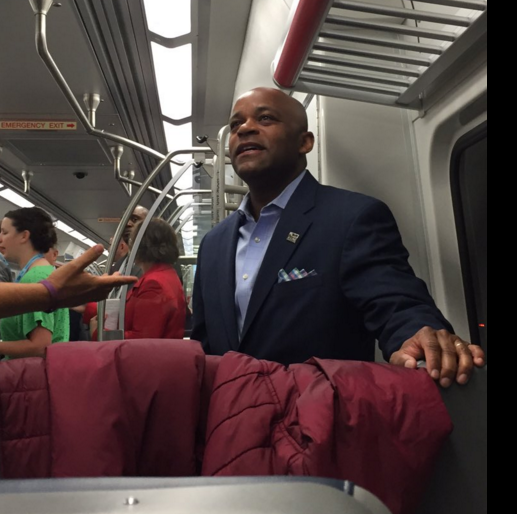The Opening of RTD’s A-Line and What’s Next for Denver Transit

The A-Line between Union Station and Denver International Airport opened today to loads of fanfare: Two ribbon cuttings (one at each end of the line), 14 scheduled speeches, and a media train that departed at 5 a.m.
As Streetsblog wrote earlier this week, the hype for the A Line has gotten a little out of hand. Other than linking downtown to the airport, it’s mostly a collection of park-and-ride stations providing long-term car storage for air travelers, not the kind of multi-purpose route anchoring walkable neighborhoods that great transit networks are built from. Still, while it doesn’t make Denver a true transit city, the opening of a new rail line is always significant.

Streetsblog was on the pre-dawn ride. We checked out the “train to the plane” and asked decision makers what’s next for Denver transit, now that the airport line is finally finished. How will they make Denver a great transit city?
“We’ve already started, but the exciting part now is that we can really turn our attention to really marketing and creating some real opportunities around those transit sites,” said Mayor Michael Hancock. The mayor was not just referring to his “Aerotropolis” plan to focus development near the airport, he said. He pointed to an apartment building with 150 “affordable units” at the 40th-Colorado Station, which he cut the ribbon on yesterday. “That wouldn’t have happened without the train,” he said.
Hancock estimated that the areas around Denver’s A-Line transit stations would take five to 10 years to reach their full potential as “transit-oriented communities.”
Transportation Director Crissy Fanganello said Denver’s impending transit plan, the first-ever that focuses specifically on the Mile High City, will address the everyday travel needs inside the city that RTD’s rail routes don’t serve very well.
“RTD and the FasTracks work that we’ve been doing for the last several years has really been focused on the region,” Fanganello said. “And what we are trying to do with the Denver transit plan is start to think about how do we make those internal connections within the city to have better transit service, understand better what it is that we need, and understand what our role is in transit. Not everyone’s trying to get on the train everyday. Some people are, and that’s fantastic — we want to make sure we can get those people there. But we also need to make sure we are serving the neighborhood communities and getting them where they need to go.”
We’ll have more next week on what Denver needs from its local transit system. For now, here’s some pertinent information about riding the A-Line, and some more images from the inaugural ride:
- Trains depart every 15 minutes from each station.
- Any trip to or from the airport costs $9 one-way.
- RTD instituted service changes on several bus lines that start Sunday, so check if you’re affected.
- The A-Line doesn’t quite run 24/7, but it’s close. Here’s the schedule.
Here are the bike racks on the A Line cars. 16 per run, 8 per car. pic.twitter.com/OBeMlOdODn
— Streetsblog Denver (@StreetsblogDen) April 22, 2016




